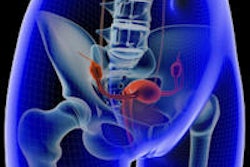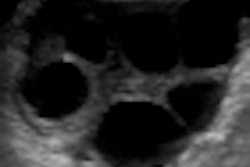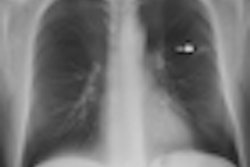
NEW YORK (Reuters Health), Jul 28 - A procedure that stops the blood supply to fibroids could be a safe and effective alternative to hysterectomy for women whose fibroid symptoms won't go away, according to a new study.
But some who get uterine artery embolization -- which is less invasive, cheaper, and easier to recover from than a hysterectomy -- might still eventually need a hysterectomy to relieve their symptoms, the results of the study in 150 women show.
Uterine fibroids are generally benign tumors that grow in the walls of the uterus. In an embolization procedure, a catheter filled with small particles is used to block off the vessels that supply blood to the fibroids. In a hysterectomy, fibroids are surgically removed from the body -- along with the rest of the uterus. Embolization is performed by a radiologist, while hysterectomy is done by a patient's gynecologist.
"Hysterectomy has the major advantage of really getting rid of the fibroids forever without any doubt, whereas embolization sometimes gets rid of the fibroids," Dr. Klim McPherson, an obstetrician at the University of Oxford in the U.K. who was not involved with the study, told Reuters Health.
But, "hysterectomy interferes with sexual function, urinary function, ovarian function ... if you really want to treat the fibroids, hysterectomy is going to do that but much more as well," McPherson said.
About 40% of women will get uterine fibroids, said Dr. Jim Reekers, a radiologist at Amsterdam's Academic Medical Center and one of the study's authors. About half of women with fibroids have symptoms, often including pain and heavy menstrual bleeding. And about half of those will not be helped with medication and other noninvasive treatments and will turn to surgery, Reekers said.
In the current study, published in the American Journal of Obstetrics & Gynecology, Reekers and his colleagues followed about 150 women, most in their 40s, who had uterine fibroids that hadn't responded to medication.
The women were divided up randomly -- half got a hysterectomy, and the other half had embolization done.
Over the five years following the procedures, the authors tracked the women in the study with questionnaires, asking about their quality of life, any continuing symptoms from their fibroids, and whether they had any follow-up treatments after the original hysterectomy or embolization.
At the end of the five years, there was no difference in the physical or mental quality of life reported by the two groups, and more than four out of five women in both groups were very satisfied with the treatment they had received. The majority of women also reported that their fibroid symptoms were gone or much improved.
But some women who had undergone embolization continued to struggle with heavy bleeding, and about a quarter of them went back for a hysterectomy, most in the two years after their embolization. About 10% of women in the hysterectomy group went back for another procedure, often because they still had abdominal pain.
The results suggest that embolization could be a worthwhile choice for many women, even if they run the risk of ultimately needing a hysterectomy anyway, the authors say.
"When you do embolization, you avoid major surgery, you don't have a scar," Reekers told Reuters Health. Hysterectomies often keep a patient in the hospital for up to five or six days, and they won't be totally back on their feet for more than a month, he said. After embolization, women can leave the hospital in a day and be back at work within a week, Reekers said. "It's much more friendly to the patient," he added.
Cutting down on hospital time also makes the procedure much cheaper -- in the Netherlands, embolization beats hysterectomy by about $4,000, Reekers said.
Dr. Sanne van der Kooij, the lead author on the paper and also a radiologist at the Academic Medical Center in Amsterdam, said the benefits of embolization may include much more than cost and convenience.
"A lot of women find hysterectomy really invasive because they lose their uterus," she told Reuters Health. "Some find it really emotional."
Dr. Linda Bradley, the vice chair of obstetrics and gynecology at the Cleveland Clinic, says the most appropriate treatment for uterine fibroids also depends on the patient's symptoms. Embolization generally does a good job of alleviating heavy bleeding, she said. But for women with large, visible fibroids, embolization might not shrink the fibroids as much as patients would like.
"The patients have to be honest and know what they want as an option, and the doctors have to be honest with their workup," Bradley, who was not involved with the study, told Reuters Health. She also puts all of her patients through imaging scans because the location of the fibroids might help determine what the most effective treatment would be.
While embolization, unlike hysterectomy, leaves women with the ability to have children, there is still controversy over whether the procedure puts future mothers at risk for complications including miscarriage.
But most women who will need surgery are beyond childbearing age, Bradley says, so studies like this that show the long-term success of embolization are exciting.
Bradley says that about 1,000 of her own patients have undergone embolization procedures -- however, she is probably the exception rather than the rule.
According to the National Institutes of Health, about 65,000 women in the U.S. undergo hysterectomy to treat uterine fibroids every year. By comparison, the Society of Interventional Radiology reported that as of 2004 -- the last time they reported such data -- 13,000 to 14,000 embolizations were done in the U.S. each year.
Part of the reason that embolization is less popular than hysterectomy could be that gynecologists often want to perform a hysterectomy themselves and not refer patients outside their practice, Reekers said. And many patients don't know about embolization as a treatment option.
"It's a matter of awareness," Reekers said. "There's enough science to prove that this technique is very, very good. It's just a matter of changing the attitude."
By Genevra Pittman
Source: http://link.reuters.com/hyk58m
American Journal of Obstetrics & Gynecology, online June 28, 2010.
Last Updated: 2010-07-28 11:10:03 -0400 (Reuters Health)
Related Reading
UFE fertility rates compare to surgery, March 15, 2010
Uterine fibroid embolization does not accelerate ovarian reserve decline, January 27, 2010
Laparoscopically assisted cryoablation effective for uterine fibroids, December 29, 2009
Hysterectomy most cost-effective fibroid treatment, March 20, 2009
Age-related changes in uterine fibroids differ between black and white women, December 1, 2008
Copyright © 2010 Reuters Limited. All rights reserved. Republication or redistribution of Reuters content, including by framing or similar means, is expressly prohibited without the prior written consent of Reuters. Reuters shall not be liable for any errors or delays in the content, or for any actions taken in reliance thereon. Reuters and the Reuters sphere logo are registered trademarks and trademarks of the Reuters group of companies around the world.



















